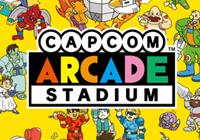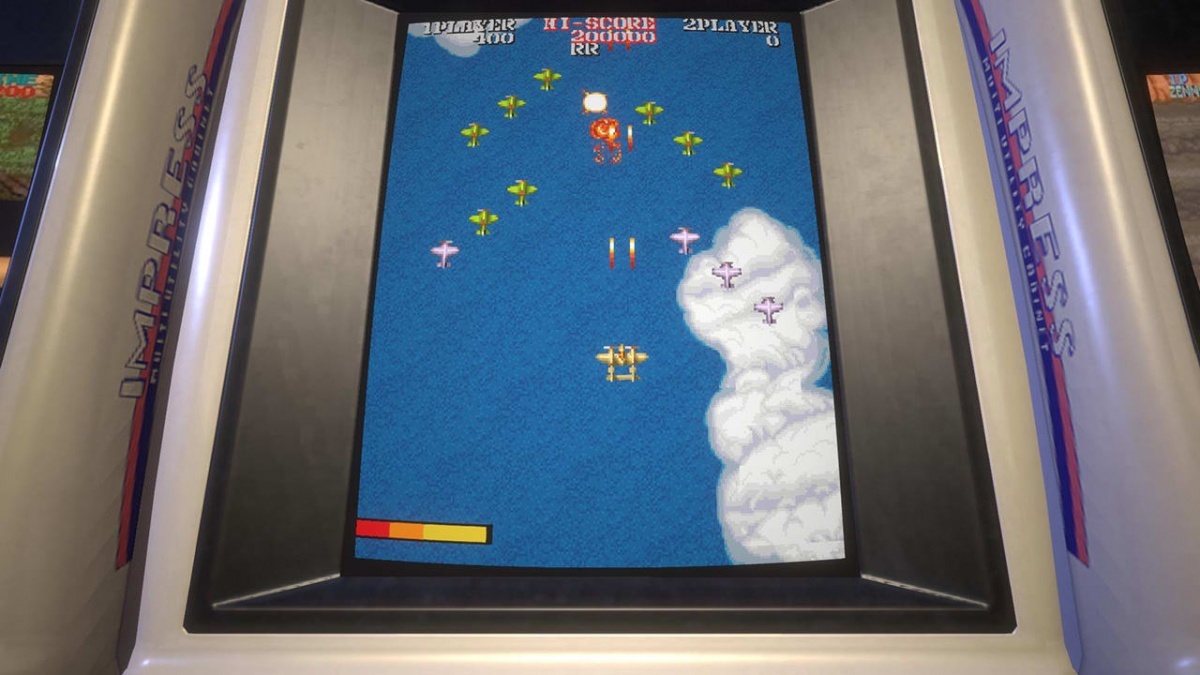Capcom Arcade Stadium (Nintendo Switch) Review
By Renan Fontes  31.03.2021
31.03.2021

The arcade's glory days are long gone, and they likely won't be coming back anytime soon. Similarly, game design on a whole has moved away from what defined arcade staples. Lives are considered an archaic concept, difficulty curves aren't designed with guzzling quarters in mind, and less emphasis has been placed on creating a unique identity through presentation. Capcom Arcade Stadium is not only a throwback to gaming as it was during the height of the arcade, but a testament to the fact that good game design doesn't age. If anything, it's never been easier to appreciate the many classics that defined Capcom's history with arcade gaming.
Capcom Arcade Stadium is divided among three packs, all of which feature 10 titles from the same era of arcade history. The picks themselves have been broken down across three genres - Action, Shooter, and Fighting - with licensed games noticeably absent. That said, all three packs feature plenty of gameplay variety and split up the heavy hitters just enough where each pack has at least two or three truly great titles that more than make up for their price point.
The first pack, Dawn of the Arcade, features titles from 1984 to 1988 and details Capcom's early relationship with top-down shooters and the action genre. Vulgus is a simplistic shoot em up that's easy to pick up and play, with primitive controls and mechanics that put the rest of the collection into perspective. Pirate Ship Higemaru is an unorthodox puzzler with action sensibilities, 1942 is a stylish aerial shooter, and Commando brings gunplay to the ground with omnidirectional aiming.
A common pattern with Dawn of the Arcade is how many titles set a precedent for later packs, at times almost existing like the most distilled versions of what their genre would become. Both Section Z and Forgotten Worlds are basic auto-scroll shooters, but the fact the former lets players turn around to aim while the latter features a rotating satellite for aiming helps them feel ahead of their time. Titles like Tatakai no Banka - a sword & shield-based beat 'em up - Legendary Wings - one of the most eclectic shooters on the collection - and Bionic Commando - a methodical action/platformer - in particular highlight how creative and forward-thinking Capcom has always been in terms of game design.

Of the first collection, the standout is Ghouls 'n Ghosts's arcade port, arguably the best version of the original game. The difficulty curve lives up to its notorious reputation, but the core gameplay is smooth, and the level design is genuinely rewarding for how frustrating it can be. There is notable quality of life features shared across the entire collection, allowing players to rewind, speed up gameplay, or outright customize each title's individual difficulty - making some of Capcom's hardest challenges doable for even the most unskilled gamer. Capcom Arcade Stadium prioritizes making audiences feel as comfortable as possible with a dated game.
Arcade Revolution, the second pack, spans from 1989 to 1992. As a result, the titles featured are noticeably more polished, and representative of the company Capcom would ultimately become. This is also the first of two packs to feature a proper fighting game, in this case 1991's original Street Fighter II in all its glory. Arcade Revolution also features more traditional beat em ups in the form of Final Fight and Captain Commando. The former is an incredibly primitive brawler, but it comes with an addictive charm that shines in multiplayer. Conversely, the latter shows off how much Capcom's polish and presentation were refined in just a few short years.
Dynasty Wars and Mega Twins has noticeably more personality than most titles in the collection and feature gameplay loops which, while experimental, reflect the need for "hooks" or gimmicks that dominated the arcade scene. Dynasty Wars features horseback combat where positioning plays a key role, while Mega Twins feels like a proper action RPG in more ways than one. In terms of shooters, 1941: Counter Attack, Senjo no Okami II, Carrier Airwing, and Varth: Operation Thunderstorm all outdo Dawn of the Arcade's offerings, each one genuinely addictive in their own right.

While short, Strider arguably represents Capcom's Arcade Revolution at its best. It is an action platformer with a harsh but fair difficulty curve that pushes its gameplay in unique ways. Strider Ryu's ability to scale walls and stick to the level design completely changes how players approach platforming. Like Ghouls 'n Ghosts before it, Strider is the kind of arcade game that gets better the more it's played, as players start to form a better understanding of the core mechanics and level design. At the end of the day, Capcom developed most of these titles with the pursuit of a high score in mind - something that influences their design greatly in the Revolution era.
Arcade Evolution is the final pack and will likely appeal to the widest audience as it covers nearly an entire decade of Capcom's history, stretching from 1992 to 2001. Evolution also has the benefit of featuring the better ports of Street Fighter II, those being Turbo and Turbo: Hyper Fighting. Anyone looking to get some multiplayer mileage out of the collection will find themselves with a host of excellent co-op titles on tap. Warriors of Fate is a more contemporary sequel to Dynasty Wars with better combat and just as stylish sprite work. Armored Warriors is the rare mech based beat 'em up, allowing up to three players to get together and pummel enemies into submission. Battle Circuit has a great sense of humor, is dripping with style, and has a level of polish that reflects its status as the last arcade beat 'em up Capcom ever made.
Cyberbots is no Street Fighter, but the Armored Warriors spin-off is a great fighting game with a melodramatic story that nails all of its beats with just enough passion to make them work. Combat is satisfying and the roster, while small, has a lot of personality that might have fighting game fans picking up Cyberbots over Hyper Fighting most days. Having previously only been released on Dreamcast, Giga Wing is a shoot 'em up unlike anything included on the collection, featuring a horizontally aligned monitor that's emulated perfectly. The 19XX series is also capped off with two final entries, 19XX: The War Against Destiny and 1944: The Loop Master. Neither one is the best in the franchise, but they're both fun shoot 'em ups in their own right and 19XX is closer to the rest of the series in quality.

Anyone familiar with Jamestown: Legend of the Lost Colony will have the opportunity to play its direct inspiration Progear, one of the best entries in the collection period. A hectic shoot 'em up with incredible visuals, tight controls, and excellent boss design, Progear makes Arcade Evolution's price of admission worth its weight in gold. Bullet hell fans can look forward to chaotic gameplay that never lets up and is rewarding from start to finish. Rounding out the whole collection but sold separately is the very first Ghosts 'n Goblins. Capcom's decision not to include it in the base game while featuring Ghouls 'n Ghosts is admittedly quite odd, but this is a classic title rooted in its own legacy, so perhaps it merits separation. Regardless, the platforming is as hard as ever and has aged wonderfully.
Beyond the games themselves, Capcom Arcade Stadium features a Class system where players rank up and unlock new borders for gameplay. The in-game hub is styled like a proper arcade, but players are free to customise their surroundings to their liking - going so far as to remove the cabinets as borders entirely. Save States can be used for each title, Special Challenges rotate in & out for anyone who wants more out of their arcade, and a leaderboard is fitting for an arcade setting, giving high scores as much value as they've ever had. Capcom Arcade Stadium is three decades of video game history that shouldn't be ignored.

Cubed3 Rating
Great - Silver Award

Featuring a total of 32 games across three downloadable packs and separate downloads, Capcom Arcade Stadium is a fantastic way of diving into the studio's gameography. Roughly 30 years of video game history are on display here, featuring a wide variety of titles that highlight Capcom's eclectic and often forward-thinking approach to game design. The implementation of rewind & save states makes virtually any entry accessible, and the ability to speed up gameplay helps the more sluggish inclusions get much needed play time. Not every game in Capcom Arcade Stadium is a classic that's stood the test of the time, but most surprisingly have, and that alone makes the collection worth picking up.
Comments
Comments are currently disabled

 Sign In
Sign In Game Details
Game Details
 Out now
Out now  Out now
Out now  Out now
Out now  Out now
Out now  Subscribe to this topic
Subscribe to this topic Features
Features





 Top
Top

